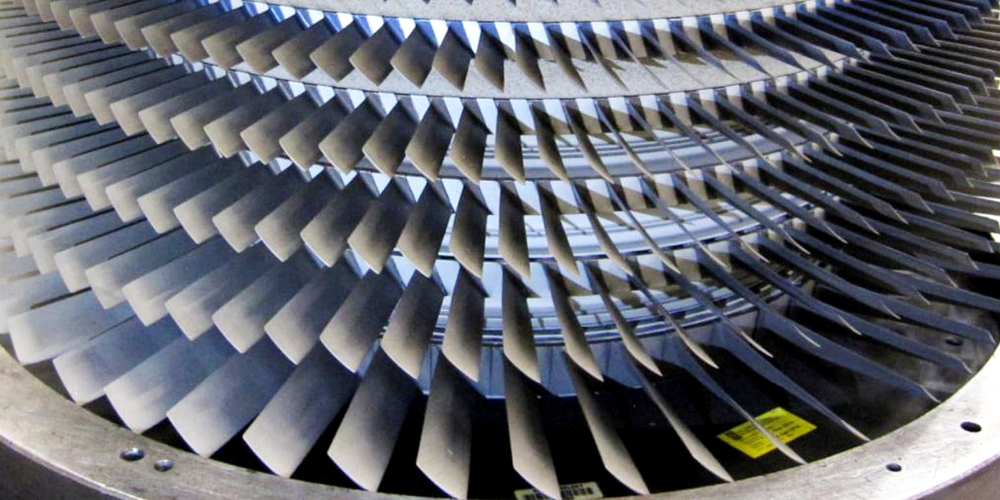Latent review of remote engine monitoring data revealed an increase in turbine engine vibration on a commercial aircraft in Central America. A borescope examination revealed that high-pressure turbine (HPT) blade damage had occurred 32 operational hours earlier.
The aircraft operator filed an insurance claim for the engine damage, but the claim was denied. Technical consultants for the insurance company asserted that the HPT was defective and caused the engine damage. The client asked ESi to perform an independent investigation of the failed HPT blade and downstream engine damage.
Our Approach
The HPT blades were directionally solidified castings with three internal cooling channels running along their length. They are manufactured from a nickel-based superalloy designed to maintain strength under significant centrifugal loading at extremely high turbine temperatures.
This strength is largely due to microscopic cube-like precipitates distributed in an ordered manner throughout the bulk metal matrix. This internal structure resists high temperature and metal creep, a common degradation mechanism in turbine blades.
ESi has deep expertise in analyzing issues related to the use of advanced, high-performance materials in aviation and other critical applications. ESi examined the turbine blades at two laboratory-based joint inspections.
Macro- and microscopic examinations were performed on several HPT blades, including the initiating failed blade, which had a separated outboard section. Fractographic examination of the initiating blade surface revealed overload separation and foreign object damage (FOD) from an iron-based item on the blade’s leading edge that had breached the cooling channel.
Metallographic examination of the internal microstructure of the casting in the FOD area revealed the following:
- The strengthening precipitates in the superalloy had dissolved due to excessive temperatures experienced as a result of the FOD induced cooling channel breach.
- The blade’s protective aluminide coating had also degraded due to high heat flux in the vicinity of the FOD.
- The metal microstructure showed evidence of precipitate “rafting,” with geometric rearrangement of the precipitates due to the stress experienced at the excessive temperatures; this rafting is a characteristic phenomenon of creep.
ESi concluded that the engine FOD breached the HPT leading edge cooling channel, disrupting the cooling and exposing the leading edge of the blade to hot turbine gases, which then caused it to overheat. As a result of the high centrifugal force and hot temperatures, the blade experienced metallic creep, which extended radially until it contacted the stationary outer shroud, causing sudden overload fracture, secondary damage, and an increase in engine vibration.
Based on this analysis, ESi clearly showed that the damage was caused by a foreign object that entered the engine, and not a defect in the engine itself, or a defective HPT blade. This conclusion was further supported by the observation that the leading-edge cooling channel of an adjacent HPT blade was also breached by the FOD.
A visual examination revealed that the adjacent blade experienced similar metal degradation and was also in the process of failing by creep. It was noted that a construction site adjacent to the airstrip could have been the source of the FOD.
Before the damage was discovered, the aircraft flew six additional flights – a true testament to the robust design of the turbine engine and HPT blades.
Services Utilized
Expertise Utilized
The Outcome
ESi investigated an issue involving the performance of the high temperature superalloy used in the turbine blades of a commercial aircraft engine. Our findings confirmed the engine was not at fault but rather, a foreign object (likely from an adjacent construction site) entered the engine causing it to ultimately fail.




